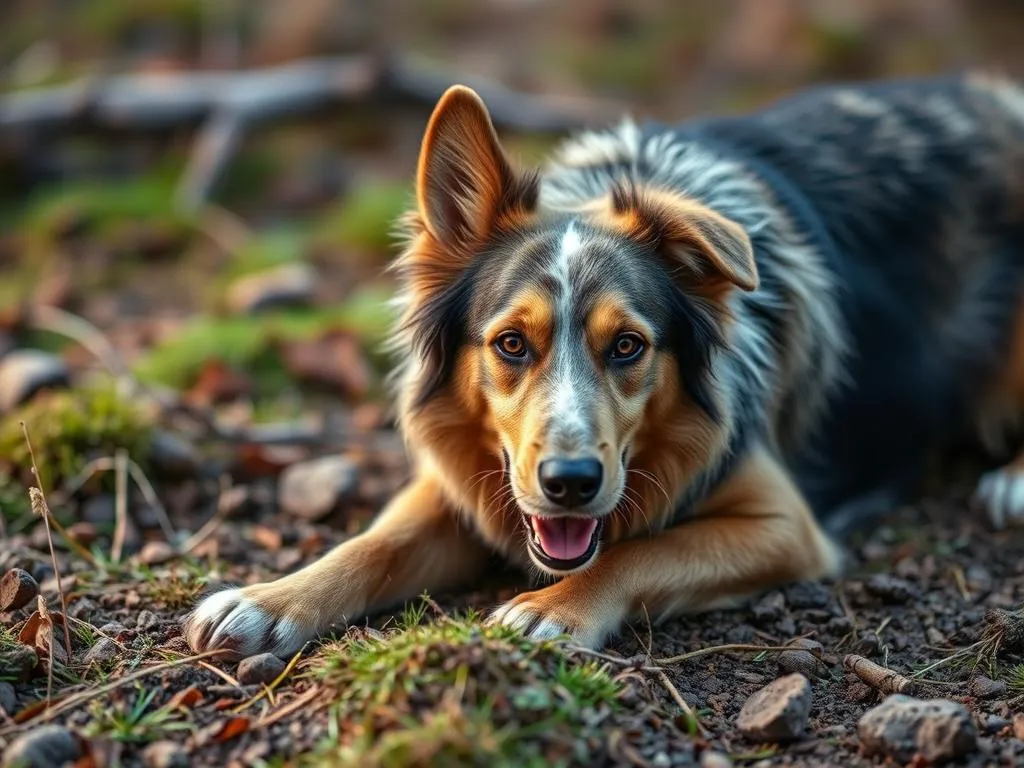
Truffle hunting is an ancient practice that combines nature, culinary delight, and a unique partnership between humans and dogs. Truffles, the prized fungi that grow underground, are not just a delicacy; they hold a significant place in the culinary world, fetching high prices in gourmet markets. The role of dogs in truffle hunting is vital, as they possess an extraordinary ability to locate these elusive treasures beneath the soil. In this article, we’ll explore how do truffle hunting dogs work, delving into their training, scent detection capabilities, and the overall process of truffle hunting.
Understanding Truffles
What are Truffles?
Truffles are a type of fungi that grow in symbiosis with the roots of certain trees. They are categorized into various types, primarily black truffles (Tuber melanosporum), white truffles (Tuber magnatum), and summer truffles (Tuber aestivum). Each type has its unique flavor profile and culinary applications. Black truffles are renowned for their earthy aroma and are often used in gourmet dishes, while white truffles are considered the most luxurious and expensive, commonly found in Italian cuisine.
Nutritionally, truffles are rich in proteins, vitamins, and minerals, making them not only a culinary delight but also a source of nourishment. Their unique flavors add depth to a variety of dishes, from pasta to risottos, making them highly sought after by chefs and food enthusiasts alike.
The Ecological Role of Truffles
Truffles play a crucial role in the ecosystem. They form a symbiotic relationship with the roots of trees, such as oak, hazelnut, and beech. This association benefits both parties: the truffle receives carbohydrates from the tree, while the tree benefits from the nutrients and water absorbed by the truffle’s extensive mycelium network. This relationship contributes to the health of forest ecosystems, supporting biodiversity and soil health.
The Market for Truffles
The truffle market has seen a surge in demand, particularly in gourmet cooking and fine dining establishments. With prices ranging from hundreds to thousands of dollars per pound, truffles represent a significant economic opportunity for local communities. Truffle hunting has become an essential source of income in regions such as Italy, France, and Spain, fostering a culture of sustainable foraging and local craftsmanship.
The Role of Dogs in Truffle Hunting
Why Use Dogs?
Dogs have been used in truffle hunting for centuries, primarily because of their exceptional sense of smell. Unlike pigs, which are also known to find truffles, dogs are easier to train, less prone to eating the truffles they find, and can work alongside their human companions more effectively. Their ability to detect scents at extremely low concentrations makes them the ideal partners for truffle hunters.
Historical records indicate that dogs were first utilized for truffle hunting in Italy and France. Over time, the practice has spread worldwide, with various breeds becoming popular for this specialized work.
Breeds Commonly Used for Truffle Hunting
While many breeds can be trained to locate truffles, certain breeds stand out due to their innate abilities and characteristics. Here are some of the most commonly used breeds:
- Lagotto Romagnolo: A water retriever breed from Italy, the Lagotto is known for its strong hunting instincts and excellent sense of smell. They are often considered the best truffle-hunting dogs.
- German Shepherd: Known for their intelligence and trainability, German Shepherds can excel in truffle hunting with proper training and motivation.
- Beagle: These small, friendly hounds possess a keen sense of smell and a playful nature, making them effective truffle hunters.
The ideal truffle hunting dog should be enthusiastic, curious, and able to work well with their handler in various environments.
The Science Behind Truffle Scent
How Truffles Release Their Aroma
Truffles release a complex array of scent compounds that attract animals, including dogs. These compounds become more pronounced as truffles mature. Factors such as soil composition, moisture, and temperature can significantly influence the strength and quality of a truffle’s aroma. The most potent scents often come from mature truffles that have reached their peak ripeness, making them particularly appealing to dogs trained to detect them.
The Dog’s Sense of Smell
A dog’s olfactory system is incredibly sophisticated. Dogs possess approximately 300 million olfactory receptors, compared to a human’s 5 million. This remarkable capacity allows them to detect scents at concentrations as low as parts per trillion. Moreover, a dog’s brain is structured to process smells in a way that helps them identify and differentiate between various odors. This extraordinary sense of smell is what enables dogs to effectively locate truffles concealed beneath layers of soil and vegetation.
Training Truffle Hunting Dogs
Initial Training Steps
Before embarking on specialized truffle-hunting training, a dog must first master basic obedience commands. Training in commands such as sit, stay, come, and heel is essential, as these form the foundation for more advanced training. Positive reinforcement methods, such as treats and praise, are crucial during this phase to build a strong bond between the dog and handler.
Specialized Truffle Hunting Training
Once a solid foundation in obedience is established, the training can shift to scent detection. This involves introducing the dog to truffle scent using truffle oil or real truffles. The goal is to teach the dog to associate the scent with a reward, such as a favorite toy or treat.
Training techniques often include:
- Scent Discrimination: Teaching the dog to identify the specific scent of truffles among other smells.
- Search Exercises: Creating scenarios where the dog must find hidden truffles, gradually increasing the difficulty as they improve.
Importance of Socialization
Socialization is a critical aspect of a truffle hunting dog’s training. Exposure to various environments, other dogs, and diverse people helps to ensure that the dog remains calm and focused during hunts. A well-socialized dog is less likely to be distracted by unfamiliar sights or sounds, making them more effective in the field.
Ongoing Training and Practice
Truffle hunting is not a one-time training process; it requires ongoing practice to maintain the dog’s skills and enthusiasm. Regular hunts, even if they do not result in a find, help reinforce the dog’s training and keep them engaged. Handlers should also be mindful of their dog’s physical condition, ensuring they remain fit and healthy for hunting.
The Truffle Hunting Process
Preparing for a Truffle Hunt
Preparation is key for a successful truffle hunting expedition. Handlers should gather essential gear, which may include:
- Tools for digging (e.g., small spades or trowels)
- Bags or containers for collecting truffles
- Water and snacks for both the dog and handler
The best seasons for truffle hunting vary depending on the species but typically occur in late autumn and winter. Ideal conditions include moist soil after rainfall, which enhances the aroma of truffles.
The Hunt
During a truffle hunt, the handler and dog work as a team. The process generally follows these steps:
- Search: The dog begins to search the designated area, sniffing the ground and surrounding vegetation.
- Indication: When the dog detects a truffle, they may exhibit specific behaviors, such as digging, pawing, or sitting. Each dog has its unique way of indicating a find.
- Digging: The handler assists the dog in carefully digging up the truffle, ensuring it is done gently to avoid damaging the fungi.
- Collection: Once uncovered, the truffle is collected and placed in a bag.
Signs of a successful find include the dog’s excited behavior and the presence of a truffle’s distinct aroma.
Post-Hunt Care for Dogs
After a truffle hunt, it is essential to care for the dog properly. Hydration is crucial, especially after a long day of searching. Handlers should also check their dogs for any injuries, such as cuts or scratches, that might have occurred during the hunt. Grooming is important as well, as it helps remove dirt and debris accumulated during the search.
Challenges in Truffle Hunting
Environmental Challenges
Truffle hunting is not without its challenges. Environmental factors, such as climate change, can significantly impact truffle growth. Changes in temperature and precipitation patterns can affect the delicate ecosystem that supports truffles. Habitat destruction, whether through urban development or agricultural practices, also poses a threat to truffle populations.
Training Challenges
Training truffle hunting dogs can come with its own set of challenges. Distractions in the environment, such as other animals or unfamiliar noises, can hinder a dog’s focus during training. Additionally, maintaining a dog’s motivation can sometimes be difficult, especially if they do not find truffles frequently.
Solutions to these challenges include:
- Gradual Exposure: Slowly introducing dogs to more distracting environments during training can help them learn to focus.
- Variety in Training: Incorporating different training methods and rewards can keep the experience fresh and engaging for the dog.
Ethical Considerations
Sustainable truffle hunting practices are essential to ensure the long-term survival of truffle species and their habitats. Responsible foraging, respecting local regulations, and avoiding overharvesting are critical components of ethical truffle hunting. By practicing sustainable methods, hunters can help preserve this ancient tradition for future generations.
Conclusion
The partnership between truffle hunting dogs and their handlers is a fascinating aspect of the truffle hunting experience. These dogs not only possess remarkable scent detection abilities but also embody the spirit of collaboration and tradition that defines this age-old practice. Understanding how do truffle hunting dogs work offers insight into the unique bond formed between humans and dogs in the pursuit of one of nature’s most elusive delicacies. The art of truffle hunting continues to thrive, thanks in large part to the dedicated dogs that make it possible.







